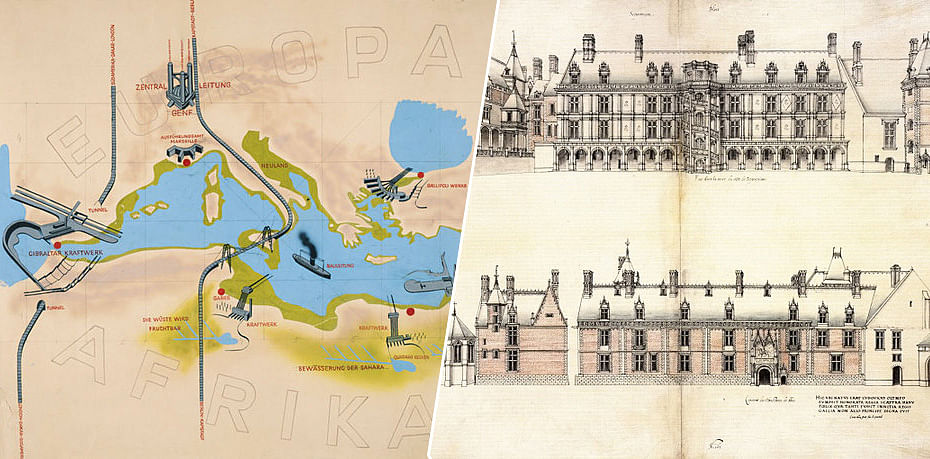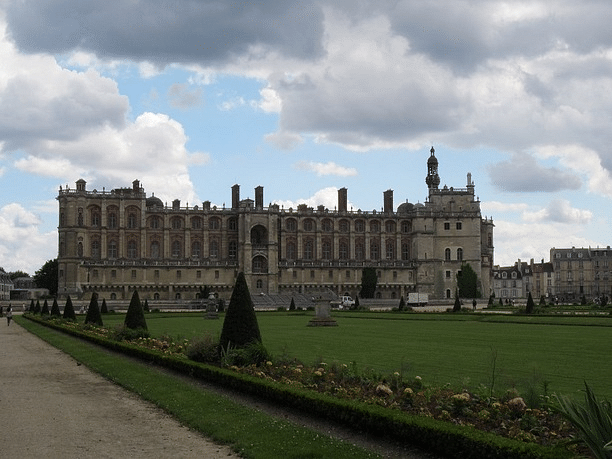Two Ph.D. students from Columbia GSAPP and Duke University win the 2016 Carter Manny Awards
By Justine Testado|
Friday, Apr 15, 2016

Related
Since 1996, the Graham Foundation has awarded doctoral students in their annual Carter Manny Awards. The program recognizes doctoral students throughout the U.S. and Canada whose dissertation projects exhibit original and advanced scholarship that have solid potential to take contemporary architectural discourse in new directions. Every year, one student receives the Carter Manny Award for Dissertation Research and another student wins for Dissertation Writing.
The $20,000 2016 Carter Manny Award for Dissertation Writing award went to Hollyamber Kennedy, a Ph.D. candidate at Columbia University’s Graduate School of Architecture, Planning and Preservation, for her dissertation “Welt bildend: Architectures of Security and Infrastructural Modernism in Germany and Beyond, 1848–1952”.
Elisabeth Narkin, who is a Ph.D. candidate in Duke University's Department of Art, Art History and Visual Studies, won this year's Carter Manny Award for Dissertation Research and a $15,000 prize for her dissertation titled, “Rearing the Royals: Architecture and the Spatialization of Royal Childhood in France, 1499–1610”.
Following a rigorous review of applications from doctoral students, who were nominated by their departments, the two grand prize winners and eight students were selected to receive Citations of Special Recognition.
Keep reading for more about the top winning dissertations.

2016 Carter Manny Award for Dissertation Writing award:
“Welt bildend: Architectures of Security and Infrastructural Modernism in Germany and Beyond, 1848–1952” by Hollyamber Kennedy
“This dissertation follows several generations of German architects, engineers, planners, and scientists, across Central Europe and colonial Africa, whose work gave shape to new forms of technical expertise through involvement in internal and external colonization projects and housing programs. It argues that a new and enduring “rule of experts” developed within the circuitry of certain infrastructural technologies—colonial camps, settlement commissions, housing estates, transnational networks—that shaped an image of the modern architect as an intervention-oriented planner. The project explores the spatial politics of the social reform movement of the 1880s and its legislative legacy—from coercive tenancy laws, to the development of colonial infrastructure, and land-use policies—and tracks its influence on the cultural logic of avant-garde housing estates. In drawing such an arc, this study demonstrates how architectural technologies shaped an infrastructural network of European power, and reframed the relationship between the body and the state.”
“Hollyamber Kennedy is a Ph.D. candidate at Columbia University's Graduate School of Architecture, Planning and Preservation. Kennedy holds a double BA in philosophy and art history from the University of Massachusetts Amherst and an MA in art history from Columbia University. Her research focuses on the history of modern architecture, the politics of land reform, urban design, colonial building programs, and transnational infrastructural networks in Central Europe and German colonial Africa.”

2016 Carter Manny Award for Dissertation Research award:
“Rearing the Royals: Architecture and the Spatialization of Royal Childhood in France, 1499–1610” by Elisabeth Narkin
“Investigating the manner in which architecture actively shaped and was transformed by the French royal family between 1499 and 1610, a period rife with political tension, this dissertation examines architecture's relationship to conceptions of childhood and its role in the royal family's symbolic self-representation, quotidian existence, and dynastic strategies at the châteaux of Amboise, Blois, Fontainebleau, and Saint-Germain-en-Laye. Of particular importance was the architecturally prominent placement of the children’s female households and the spatial parity of boys’ and girls’ apartments. The project shows how these structures indoctrinated the French royal children into the monarchy's social hierarchy and cultural regime at a critical political moment across Europe, as reigning dynasties consolidated power. By analyzing transformations in the monarchy's modes of inhabiting its kingdom, from fortified towers to the socio-architectural experiment that was Versailles, this project emphasizes the relationship between architectural manifestations of power and the monarchy's evolving political strategies.”
“Elisabeth Narkin is a Ph.D. candidate in the Department of Art, Art History and Visual Studies at Duke University, where she specializes in the art and architecture of early modern France. Her research explores the intersection of European courts and architecture, with an emphasis on the latter's social and symbolic functions.”
Citations of Special Recognition:
WRITING
“At the Threshold of the Mediterranean: Architecture, Urbanism, and Identity in Early Modern Sicily”
by ELIZABETH KASSLER-TAUB | Harvard University, Department of History of Art and Architecture
“Komp'iuter Architecture(s), 195X–198X”
by EVANGELOS KOTSIORIS | Princeton University, School of Architecture
“Novel Buildings: Architectural and Narrative Form in Victorian Fiction”
by ASHLEY NADEAU | University of Massachusetts Amherst, Department of English
“All Streets Lead to Temples: Mapping Monumental Histories in Kanchipuram, ca. 690–1199”
by CE EMMA STEIN | Yale University, Department of the History of Art
RESEARCH
“Circles of Artifice: Semi-public Interiors of Spectacle in Late Nineteenth-Century Paris”
by CRISTOBAL AMUNATEGUI Princeton University, School of Architecture
“Restoration, Displacement, Appropriation: Negotiating the Baroque Legacy in the National Fascist Party's Redesign of Rome”
by ANNA MASCORELLA Cornell University, Department of Architecture
“Agritectures of the Green Revolution: Art, Architecture and the Agrilogistics of Transnational Aid from the United States to the Caribbean Region, 1930–1978”
by NIKKI MOORE Rice University, Department of Art History
“The Architect's Knowledge: Images of History in American Architectural Education, 1800–1925”
by BRYAN NORWOOD Harvard University, Graduate School of Design


Share
0 Comments
Comment as :